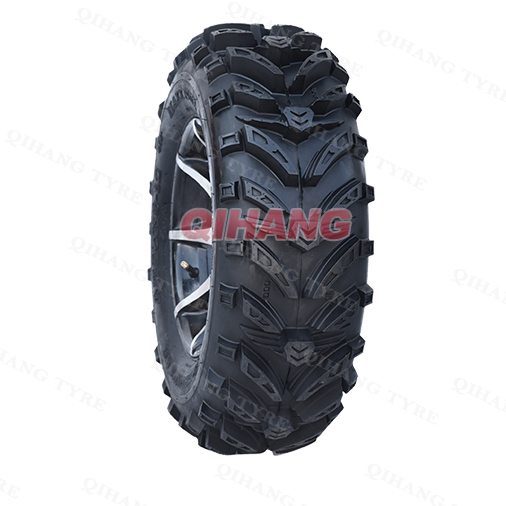Emergency treatment for agricultural tire damage requires targeted measures based on the type of damage. Specific recommendations are as follows:
1. Emergency Treatment for a Tire Blowout
Rear Tire Blowout
How to: Hold the steering wheel firmly with both hands, gently apply the brake pedal, slowly reduce speed, and bring the vehicle to a steady stop.
How it works: When a rear tire blows, the rear of the vehicle will experience significant vibration, but steering control is unlikely to be lost. Gently applying the brakes can prevent the vehicle from spinning out and avoid unilateral movement and rollover caused by emergency braking.
Front Tire Blowout
How to: Maintain firm control of the steering wheel with both hands, ease off the throttle pedal, avoid emergency braking, and allow the vehicle to slow down in its original direction before stopping.
How it works: A front tire blowout can cause the vehicle to immediately veer off the road or sway severely. Emergency braking can place excessive pressure on the front of the vehicle, increasing the risk of loss of control.
Subsequent Treatment: After the truck is parked, immediately use a jack to support the front or rear axle at the location of the blown tire to prevent the cargo from tilting and damaging the vehicle's cabin or frame. 2. Emergency Treatment for Punctures and Scratches
Temporary Repair
Operation: If the carcass cord is not broken, use a mushroom nail patch (diameter ≥ 6mm) to repair the inside of the tire and apply sealant to the outside.
Application: Suitable for temporary repairs during field operations to allow the vehicle to reach a safe area.
Self-Healing Technology
Operation: Inject self-healing gel to fill punctures ≤ 6mm.
Advantage: Quickly restores tire sealing without disassembling the tire, making it suitable for emergency situations.
Contraindications: If sidewall damage exceeds 5cm or carcass delamination occurs, do not repair the tire and replace it immediately.
3. Emergency Treatment for Bulges and Abnormal Wear
Bulge Treatment
Inspection: If the sidewall is bulged and the cord is broken, replace the tire immediately. Avoid mixing tires of different brands or models.
Cause: Bulges are usually caused by carcass cord breakage or rim deformation. Continued use may result in a blowout.
Uniform Wear Adjustment
Operation: If one sidewall shoulder is severely worn, adjust the toe angle (±1mm) or replace the steering wheel. If the center of the tire crown is worn, increase the tire pressure to the upper limit of the standard value.
Principle: Eccentric wear is often caused by abnormal four-wheel alignment parameters or insufficient tire pressure, and adjustments are required to restore normal tire wear.
Treatment of Feathering Wear
Inspection: If the tread shows feathering wear, check the wheel hub bearing for looseness and perform a dynamic balance test.
Principle: Feathering wear is usually caused by tire imbalance or suspension system failure and requires targeted repair.
4. Emergency Treatment for Other Damage
Valve Cover Missing
Action: Cut a piece of soft plastic tubing with an appropriate inner diameter, seal one end with hot melt, and place the other end over the valve. Alternatively, tie one end of a rubber hose tightly, place the other end over the valve, and secure with thin wire.
Purpose: Prevent soil from entering the valve and prevent air leakage.
Tubeless Tire Puncture
Action: If the leak is not severe, do not remove the punctured object yet. Inflate the tire fully and continue driving to your destination before repairing. Principle: After a puncture, a tubeless tire temporarily seals the wound with air pressure. Removing the punctured object will cause further leakage.
Risk of Tire-Rim Separation
Action: If the tire shows signs of separation from the rim, stop the vehicle immediately and inspect it. Replace the rim or tire if necessary.
Cause: Rim deformation or tire aging may result in a loose connection between the tire and rim, posing a safety hazard if continued use is required.


